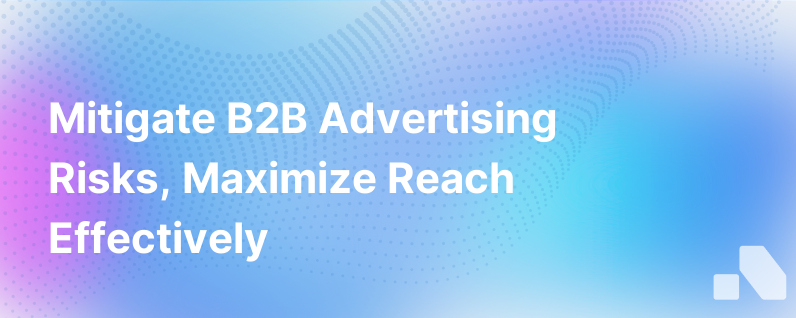
In the dynamic sphere of B2B advertising, where the potential for brand exposure meets the possibility of risk, businesses walk an unsteady tightrope. The digital landscape offers unparalleled opportunities to reach target audiences. However, it also presents scenarios that could jeopardize a brand’s reputation and message. As a marketer, how do you balance this dichotomy to ensure your brand is both seen and safeguarded? Here, we’ll unpack the critical brand safety best practices that marketers should integrate into their advertising efforts to mitigate B2B advertising risks while maximizing reach.
Unpacking the Intricacies of Brand Safety in B2B Advertising
Brand safety is a term that’s been amplified in the digital marketing echo chamber yet remains a nuanced concept. It refers to the measures companies take to ensure their advertisements do not appear in a context that can harm their brand’s image. In B2B environments, where the decision-making processes are longer and based on the trustworthiness and reliability of a brand, the ramifications of unsafe brand placements can be deeply consequential.
Understanding B2B Brand Safety Risks
Not all risks are created equal, and identifying these risks is the precursor to mitigation. Here’s a comprehensive taxonomy of brand safety threats:
- Advertising Fraud: Automated bots rather than humans view ads, creating false metrics and draining budgets.
- Misaligned Content Associations: Ads displayed alongside inappropriate or irrelevant content can devalue brand integrity.
- Privacy Intrusions: Overstepping the mark on data collection and personalization can deter potential clients.
- Negative Brand Associations: Poor choice of platforms or spaces that conflict with brand values can lead to negative perceptions. To navigate the complexities of these risks, you need a strategy that intertwines technological tools with human judgment.
Best Practices for Mitigating B2B Advertising Risks
-
Use Ad Verification and Monitoring Tools: Ad verification services are indispensable for ensuring your ads appear in the right context. They can monitor ad placements in real-time and authenticate that ad impressions are legitimate, viewable, and fraud-free. Tools like DoubleVerify, IAS (Integral Ad Science), or MOAT can provide the technology muscle you need to safeguard your placement strategies.
-
Craft a Detailed Blacklist and Whitelist: Companies should construct an extensive blacklist of sites and types of content where they do not want their ads to appear. Concurrently, creating a whitelist of reputable publishers and networks guarantees your ads are displayed in environments aligned with your brand ethics and image.
-
Implement Contextual Targeting: Contextual targeting is about placing ads based on content relevancy rather than user behavior. It ensures that your ads are contextually aligned with the content on a page, reducing the likelihood of misaligned content associations. This traditional method has seen a resurgence as a safe and privacy-compliant targeting option.
-
Engage in Direct Buys with Trusted Publishers: Direct relationships with publishers offer more control over where and how your ads are displayed. For B2B marketers, this translates into carefully chosen partnerships with industry-specific websites or platforms frequented by their target audience.
-
Evaluate New Advertising Platforms Carefully: Before embracing new platforms, rigorously validate their credibility and safety features. Investigate the platform's history with brand safety issues and make informed decisions about participation.
-
Deploy Standard and Custom Safety Measures on Social Platforms: Social media platforms often come equipped with security features to protect brand safety. Utilize these, but also tailor your custom parameters to address the specifics of your B2B audience and the nuances of your industry.
-
Prioritize Transparency in Programmatic Buys: While programmatic advertising can amplify reach, it can also obscure visibility into where ads are placed. Demand transparency from your demand-side platforms (DSPs) to ensure your programmatic buys are brand-safe or consider private marketplaces (PMPs) for greater control.
-
Establish Stringent Privacy Protocol: Adhere strictly to data protection regulations like GDPR and CCPA to build trust with your B2B audience. Privacy-first advertising respects the user and aligns with the values of a safety-conscious brand.
-
Educate and Train Your Team: Ensure your team is aware of the latest brand safety challenges and best practices. Regular training allows everyone to contribute to a collective effort to protect the brand.
-
Respond Swiftly to Brand Safety Incidents: Sometimes, despite every precaution, a brand safety incident may occur. Develop a response plan to act quickly and effectively. This should include pausing campaigns, conducting assessments, and communicating transparently with stakeholders.
The Importance of Balancing Brand Safety and Reach
While boiling down your focus to brand safety can theoretically protect your reputation, the extremes can restrict your reach and resonance with the audience. The balance comes from integrating robust safety measures without constraining the potential of your ads to engage and convert. An over-conservative approach might mean missed opportunities, while a laissez-faire stance could lead to damaging brand encounters.
Conclusion
The strategies outlined above aren’t exhaustive, but they serve as cornerstones for a B2B company’s advertising fortress. Marketers should promote a culture of continuous learning and vigilance against the evolving threats to brand safety. Through strategic planning, smart technology usage, and incessant optimization, B2B marketers can achieve the dual objectives of safeguarding the brand and maximizing reach.
By implementing these best practices, businesses can mitigate advertising risks and maximize their reach in a way that fortifies brand integrity. In an era where reputation is paramount, smart B2B advertising isn’t just about being seen—it’s about being seen in the right light.